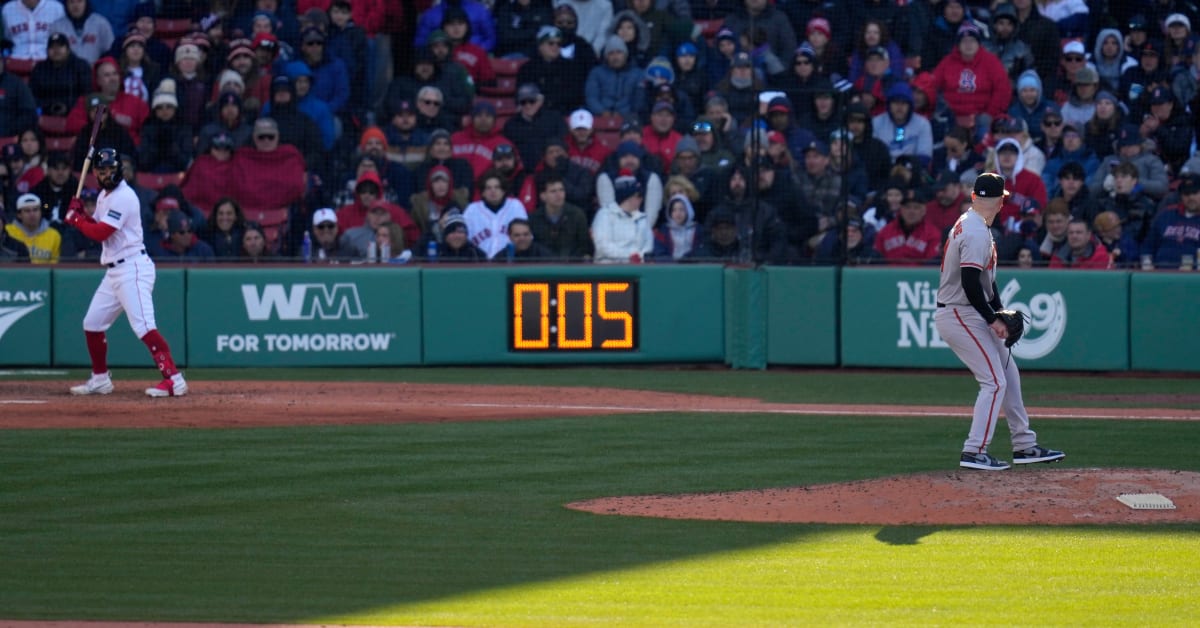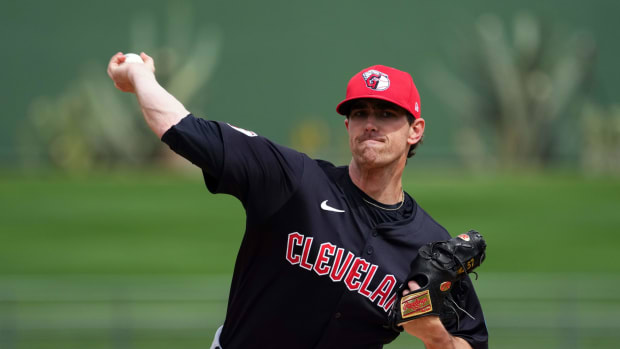MLB’s New Rules Are the Best Thing to Happen to Baseball in a Long Time
Giants infielder J.D. Davis stepped into the batter’s box in the ninth inning at Yankee Stadium on Thursday and suddenly transported us all the way back to the Dark Ages of baseball, which is to say seven months ago.
The first thing Davis did after stepping in was to step out with his left foot. Then he cradled his bat under his left arm, unhinged the Velcro strap on his left batting glove and refastened it. Remember, Davis had yet to take a swing. Then with his right hand he grabbed some pine tar off the midpoint of his bat. Then he did the same with his left hand, all the while studying his bat like the Sunday crossword.
Home plate umpire Laz Díaz suddenly did what the rest of us have been doing for years watching these mindless Velcro rituals and pantomimes of nothingness drag baseball into a snoozefest that caused 15 million paying customers to quit going to games over the past 15 years: He threw up his hands and essentially announced, “Enough!”
In technical terms, a buzzer attached to Díaz’s belt alerted him to a PTV, a pitch timer violation, for Davis not having two feet in the box and alert to the pitcher with eight seconds remaining on a 20-second countdown (there was a runner at first base) under the control of an FTC, or field timing coordinator.
In layman’s terms, the word is, Hallelujah!
Davis was assessed a strike without a pitch being thrown. He struck out.
It took just one day to see that baseball’s new rules—most especially, the pitch timer—are the best thing to happen to baseball since soft serve ice cream in a mini plastic helmet.
If you are under the age of 40, you have never seen baseball played like it was on Opening Day. (How sad it feels to write that!) If you are over 40, you were reminded of the mid-1980s, the last time the average baseball game took less than two hours, 45 minutes, when there was such a thing as ground ball single to the pull side, teams actually stole bases, Hollywood cranked out blockbuster baseball movies every year and the World Series never had so many viewers.
As baseball fell out of the favor of paid customers, viewers and media types who love to be cranky or ride bandwagons, the repeated chorus of complaints was “baseball is too slow!” They weren’t wrong. Finally, in one fell swoop, baseball has removed the biggest objection.
The Davis PTV was the only violation in what was a 5–0 win by the Yankees over the Giants, owing to how well the players adjusted to the timer in spring training. The 15 games included only 14 PTVs (eight by pitchers, four by batters, one by baserunner, one by catcher).
The Yankees-Giants game took two hours, 33 minutes. It took 3:56 for New York to slog through Opening Day last year, a 6–5 win in 11 innings over Boston. It was the first time in 180 games that the Yankees won a game so quickly at Yankee Stadium (no bottom of the ninth) with five or more runs scored.
It wasn’t just a Broadway production. Everywhere you looked baseball was played at a faster pace. Compare the 12 Opening Day games of 2022 to the 15 Opening Day games of ’23:
| 2022 | 2023 | |
|---|---|---|
Average runs per game | 9.66 | 8.47 |
Average time of game | 3:20 | 2:45 |
Average minutes per run | 20.7 | 19.5 |
Games < three hours | 2 | 10 |
Don’t give me the “small sample size” disclaimer. The timer was tested in more than 8,000 minor league games over the past two years. It shaved 25 minutes off minor league games. It was tested in major league spring training games. It shaved 26 minutes off those games. A similar reduction in regular-season games will cut time of game under 2:45 for the first time since 1985.
For the folks at MLB, Opening Day was a birthday—the birthing of a new era that has been in the planning stages for years. Theo Epstein, a consultant to the commissioner’s office, and Morgan Sword, executive vice president of baseball operations, were in Yankee Stadium to proudly witness the arrival.
“Very proud of the industry,” Epstein says. “A lot of people and a lot of different constituencies came together with a great attitude to put a better product on the field for the fans.”
Says Sword, “We’re pleased that today has looked just like the last two years in the minors and this year’s spring training. We think we’re ready to go.”
The players deserve massive credit for buying into the changes so quickly. They realized quickly in spring training that getting off their feet for almost a half hour every game—multiplied over seven months—does wonders for their recovery, health and family life.
The other major rule changes also are having their desired effect. The bigger bases, coupled with a limit on pickoffs, prompted a 44% increase in stolen base attempts in spring training and an improvement in success rate from 71% to 77%.
In the first 11 games Thursday, teams stole 21 bases in 23 tries—that’s the equivalent of 1980s-style running.
The ban on shifts increased the batting average on pulled ground balls in spring training from .183 to .206. Sounds small, but that’s more than 2,000 hits coming back to the game. The overall batting average on balls in play jumped from .311 last spring to .317 this spring, the highest since at least 2016.
Nothing, though, is impacting baseball more than the pitch timer. Baseball excised the worst thing about baseball—all the unnecessary dawdling and dead time—and took it out in one fell swoop. Replays happen faster (managers have less time to contemplate a challenge). There is less killing time to get relievers ready. Fewer Velcro rituals.
If you fell out of love with baseball, and you’re old enough to remember the 2:33 game, it’s a good time to come back. This is the game you once loved. And if you’ve never seen baseball played this quickly, it looks like a whole new ball game.



































